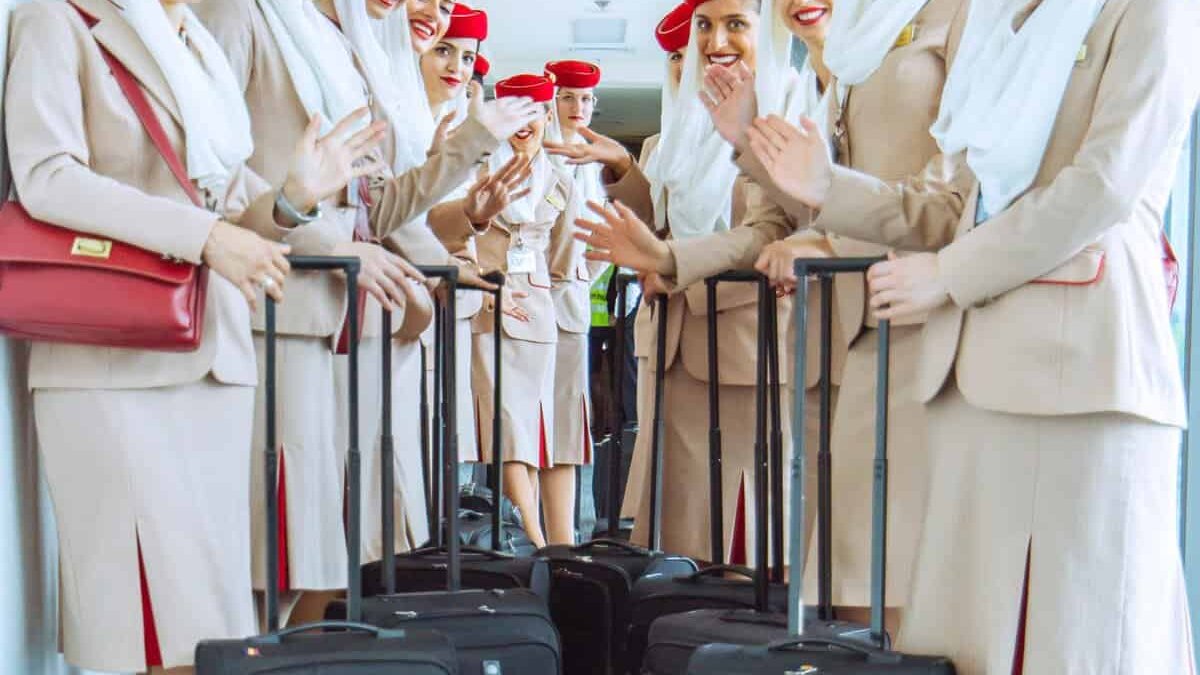Hey there, air travel enthusiasts! Get ready for a wild ride into the future of air travel. The skies are about to get a whole lot more exciting, thanks to the rapid advancements in technology and innovation that are shaking up the aviation industry!
From the moment you book your flight to the second you step off the plane at your destination, the travel experience is about to be transformed. We’re talking a smoother, faster, and more enjoyable journey from start to finish. So hold on tight and get ready to explore the most exciting new tech and innovations that are set to completely revolutionize the way we travel!
Check-In
Long queues at the airport are a common pain point for travelers. This is where virtual queueing comes in to save the day. Virtual queueing technology allows travelers to join a virtual queue through their mobile phone or airport kiosk. This means that travelers can spend their time shopping or eating in the airport instead of standing in line. When it’s their turn, the traveler will receive a notification on their phone and can then proceed to the appropriate desk. This will make the check-in process smoother and faster for everyone.
Biometric recognition technology is set to transform the airport check-in experience. With just a quick scan of your face or fingerprints, you can check in, drop off your luggage, and board your flight. This technology not only improves efficiency and speeds up the check-in process but also enhances security by accurately identifying passengers. No more digging through your bag for your passport or boarding pass. You can say goodbye to long queues and paperwork, and hello to a seamless check-in experience. Biometric recognition technology is already being adopted by major airlines and airports worldwide, and it’s just a matter of time before it becomes the norm.
Robotic luggage handling technology eliminates the need for manual baggage handling and reduces the risk of lost or damaged luggage. The technology uses autonomous robots to handle luggage, which means that travelers can relax and enjoy their flight without worrying about their luggage. This technology will make the baggage handling process faster, safer and more efficient.
Pre-flight hangout
One of the most exciting innovations in aviation is Delta’s “Parallel Reality” technology. This technology creates a virtual display that can show multiple versions of information, such as flight information and advertising, simultaneously to each passenger on the same screen. For example, one passenger might see their flight information and another passenger might see a different advertisement. To use the technology, passengers simply need to look at the display. The display uses cameras and sensors to track the passenger’s gaze, and the information displayed is updated in real-time based on the passenger’s movements. The display is also able to show information in a font and color that is easy for each individual passenger to read, ensuring that the information is accessible to everyone. This technology will change the way we receive information and interact with technology during our flights.
Wayfinding in airports can be confusing, especially for first-time travelers. Augmented reality wayfinding technology can solve this problem by providing travelers with an interactive and intuitive wayfinding experience. For example, travelers can use their smartphone to access an augmented reality map of the airport, which will show them the way to their gate, baggage reclaim, or any other location. This will make navigating the airport much easier and more enjoyable.
AI-powered customer service is set to revolutionize the way we interact with airlines. Airlines will be able to use AIto provide 24/7 customer support, with virtual agents answering questions and resolving issues in real-time. AI will be able to understand natural language and provide personalized responses based on a traveler’s individual needs and preferences. This will greatly improve the customer experience and make it easier for travelers to get the information they need.
Boarding
Again, biometric boarding technology is set to replace traditional boarding methods, such as boarding passes and ID checks. Travelers can simply walk up to the gate and board their flight without having to show a boarding pass or ID with the help of biometric data. This will greatly speed up the boarding process and improve the overall travel experience.
In-Flight
The development of the autonomous aircraft is one of the most exciting and revolutionary technologies in the aviation industry. Autonomous aircrafts have the potential to transform the way we travel, making air travel safer, more efficient, and more accessible. Autonomous aircrafts are being developed by several companies, and it is expected that they will be in commercial use in the near future. These aircraft will be operated by AI and will have the ability to fly without the need for human intervention.
In-flight entertainment is set to undergo a major transformation in the near future. With advancements in technology, airlines will be able to offer a more immersive and personalized in-flight entertainment experience. This will include virtual reality, augmented reality and other advanced technologies that will allow travelers to enjoy a movie or play a game as if they were in a real-life environment.
Personalized food and drink orders are set to become standard in the future, with technology playing a big role. Airlines will be able to use data and analytics to understand the eating habits and preferences of their passengers, and then provide them with a personalized menu. For example, if a passenger is a vegetarian, the airline will be able to provide them with a vegetarian meal. This will improve the overall experience for travelers and make the in-flight dining experience more enjoyable.
Arrival
Automated passport control technology eliminates the need for manual passport checks and reduces wait times at immigration. The technology uses facial recognition and biometric data to verify the identity of travelers and speed up the process. This means that travelers can move quickly through immigration, without having to wait in long lines. This technology will greatly improve the efficiency and speed of the immigration process.
After a long day of traveling, you can finally leave for your final destination. Will you try to get a taxi? Autonomous vehicles are being tested by ride-hail companies for airport transportation, offering a faster, safer, and more convenient alternative to traditional taxis. Uber and Waymo are among the companies testing self-driving cars for ride-hailing purposes. The city of Las Vegas, for example, already uses self-driving shuttles to transport visitors to and from parking lots at their convention center. These shuttles have been successful and have sparked interest in incorporating similar technology at airports. The use of autonomous vehicles in ride-hailing has the potential to revolutionize travel and make human drivers a thing of the past.
The future of air travel is looking sky-high with amazing new technologies taking flight! Whether it’s Delta’s Parallel Reality experience or biometric boarding, these innovative advancements are set to soar the aviation industry to new heights. Say goodbye to long lines, frustration and complicated processes, and hello to a smoother, faster, and more enjoyable travel experience.
So buckle up, aviation industry friends, because the skies are about to get a whole lot more exciting! With technology leading the way, we can’t wait to see what new innovations will come next. Get ready for a journey filled with convenience, comfort and adventure! Let’s take off into the future of air travel together!
Relatable Comics For Flight Attendants
These relatable and uplifting comics through the eyes of the flight crew…



